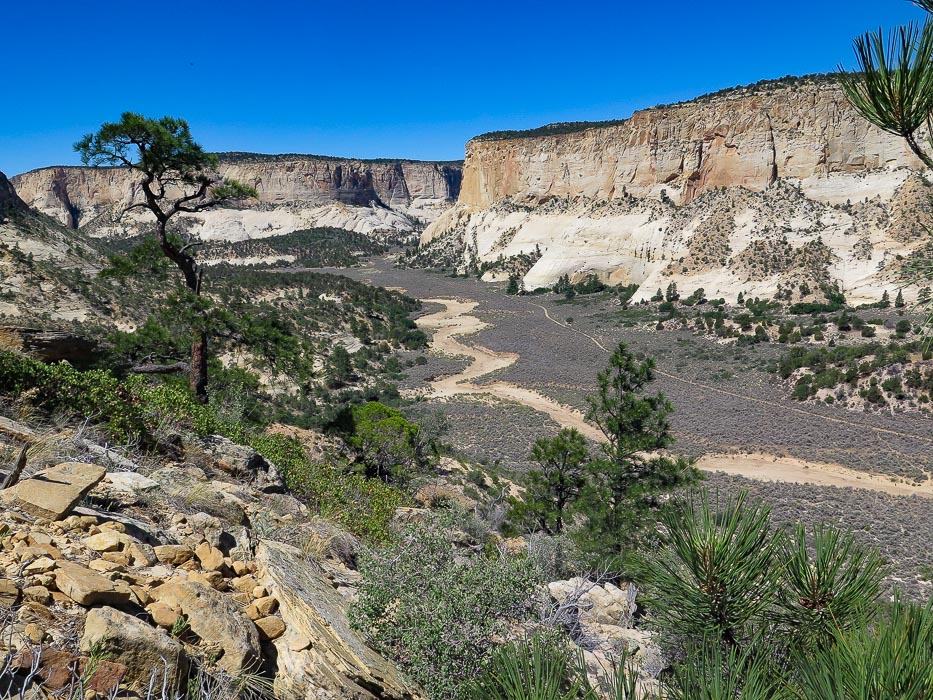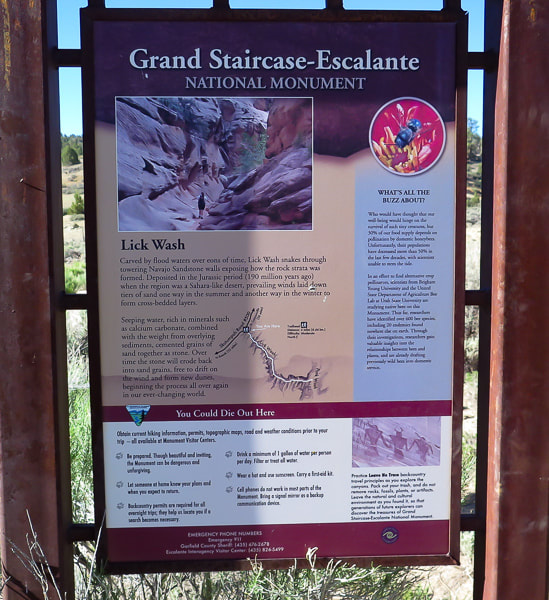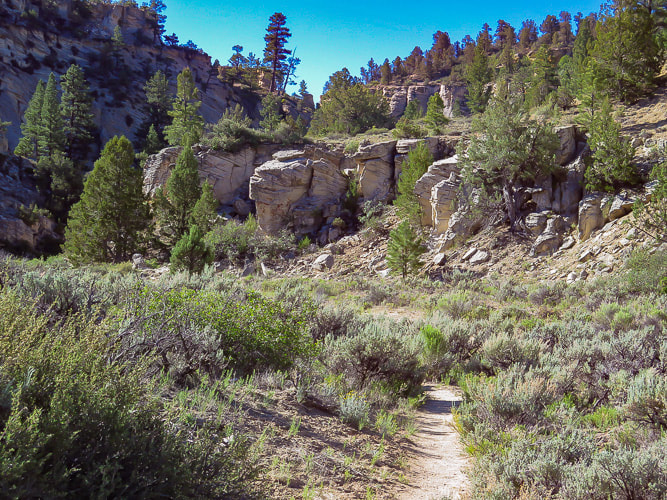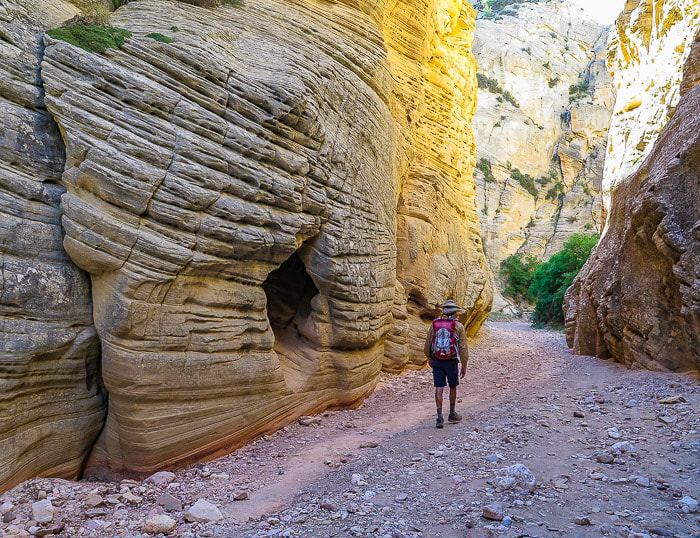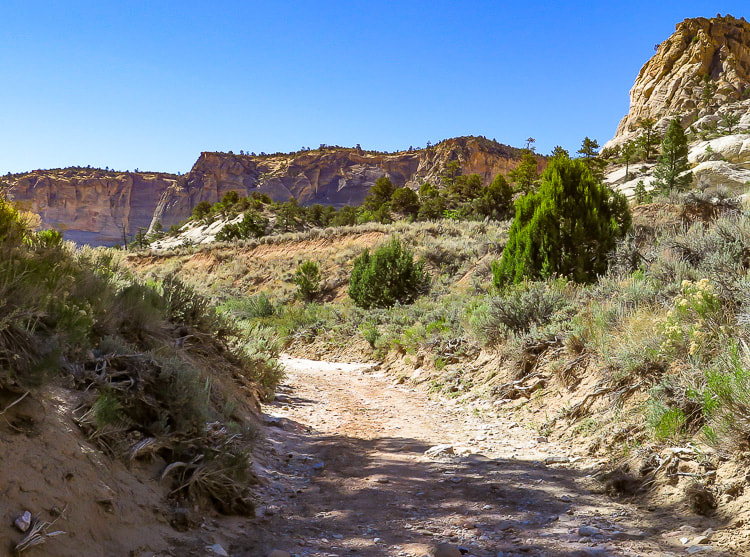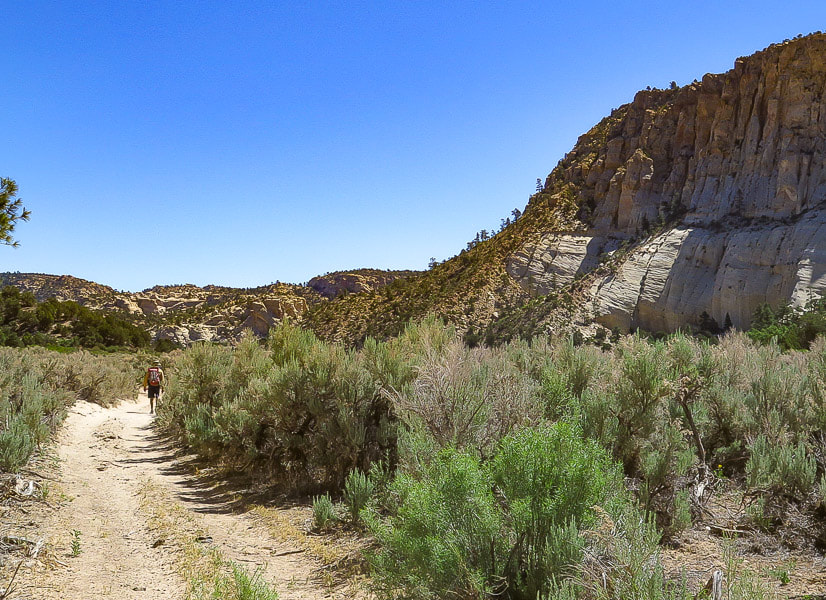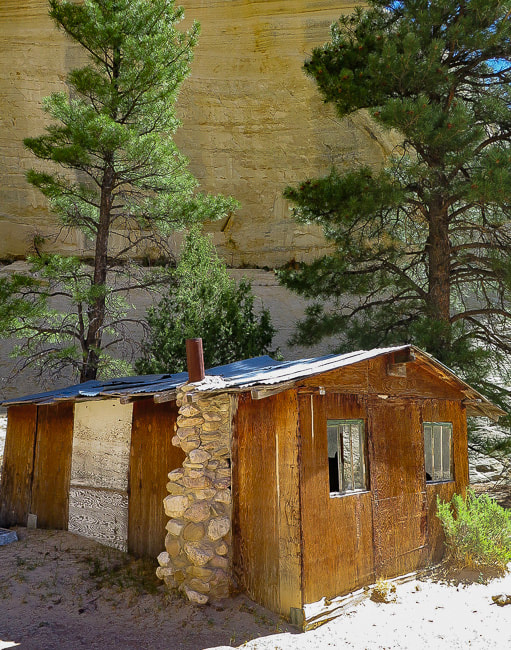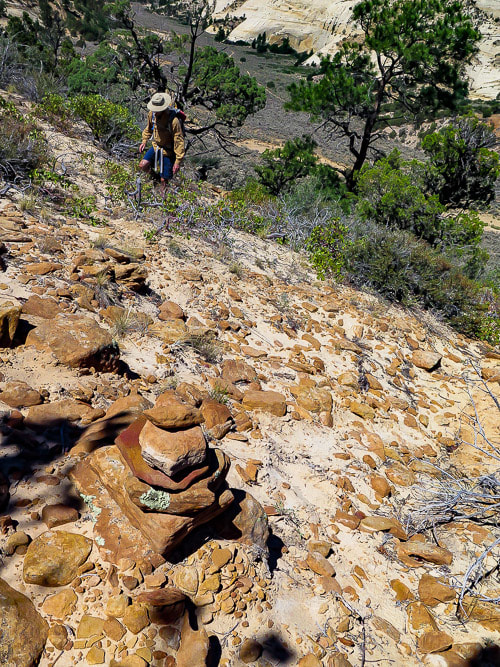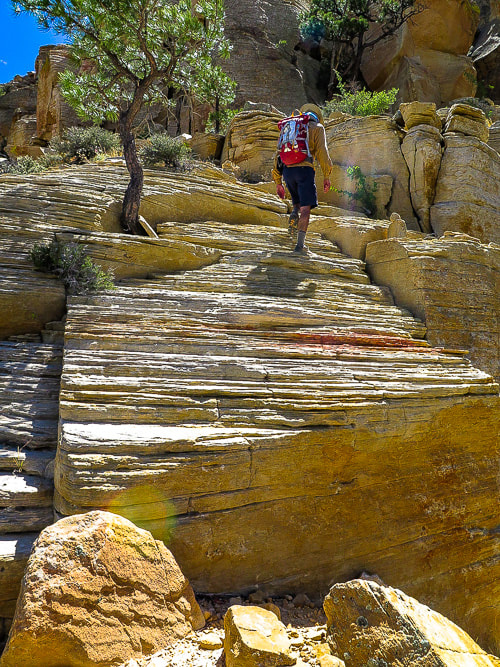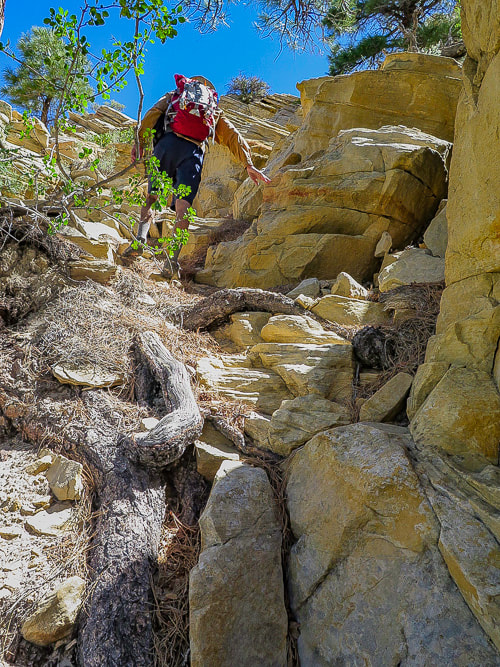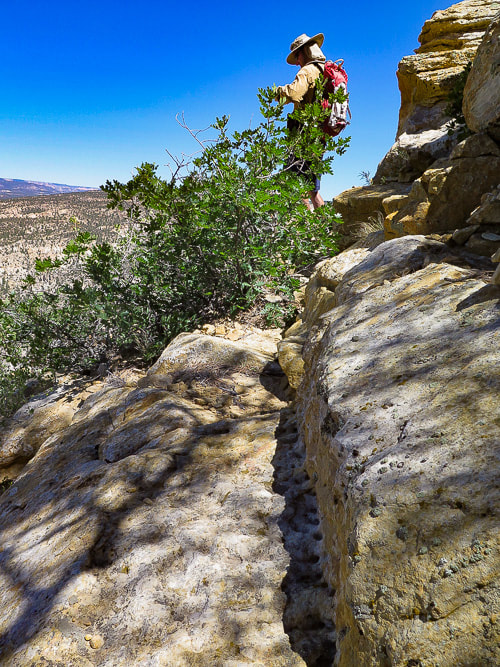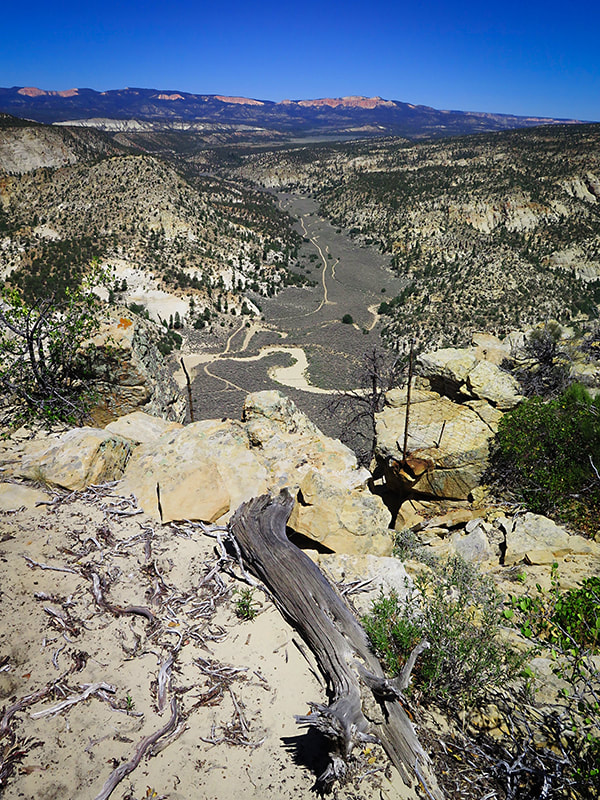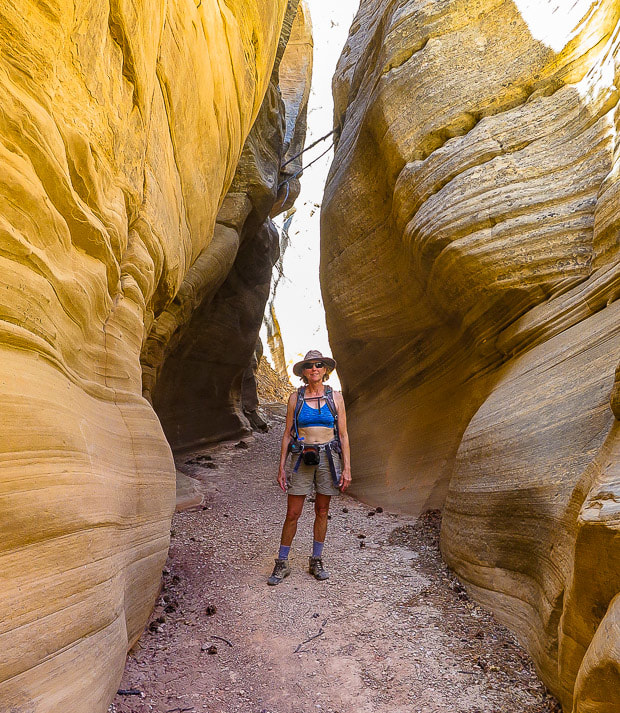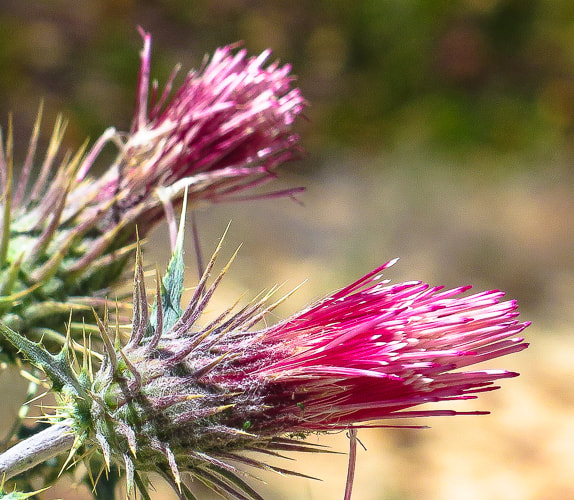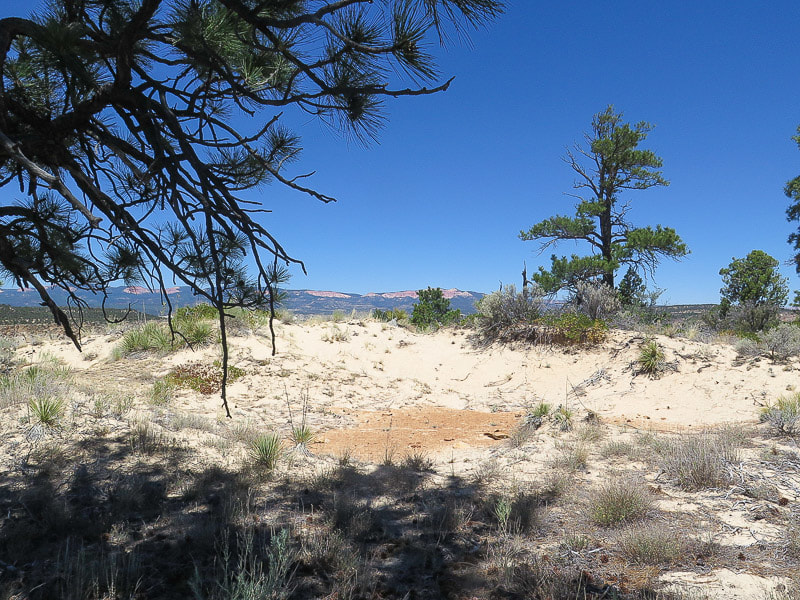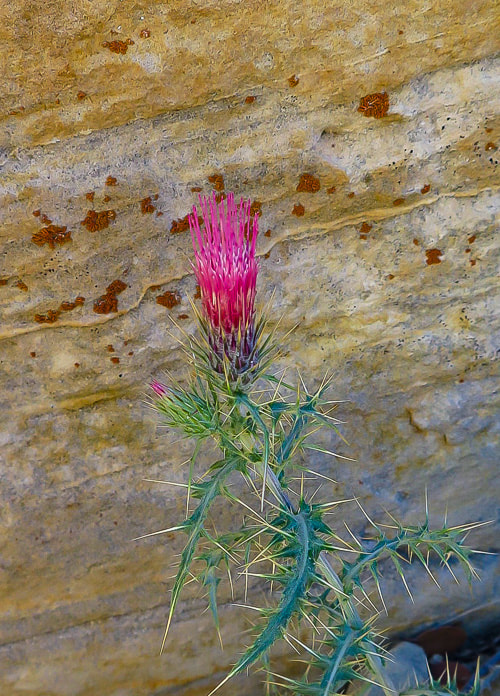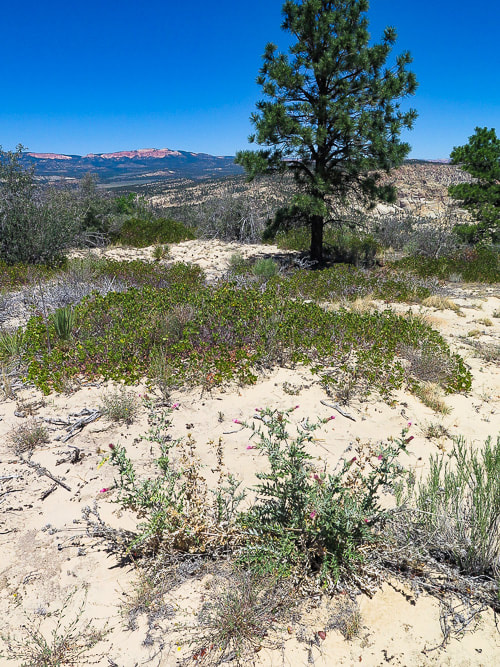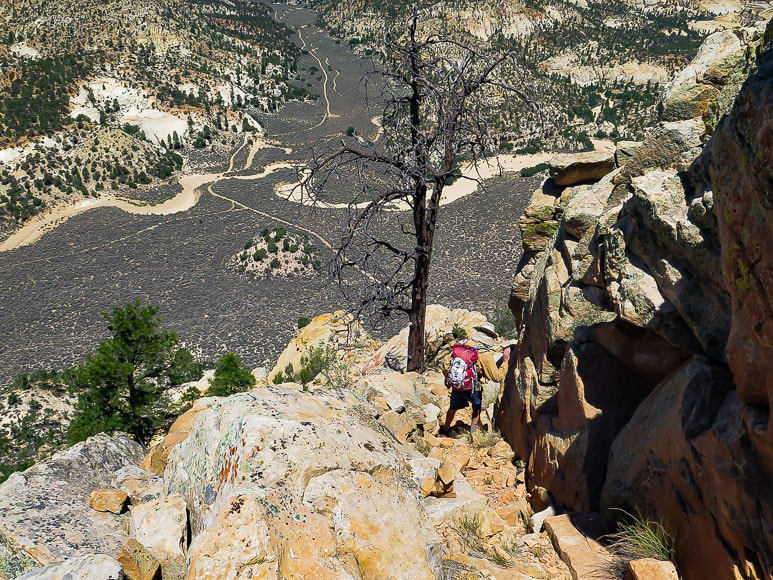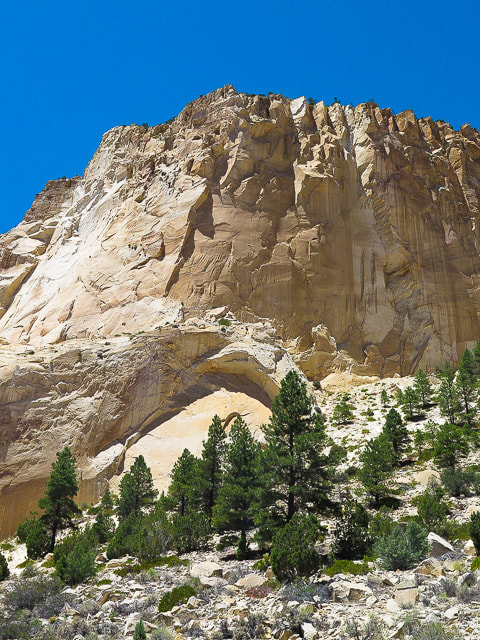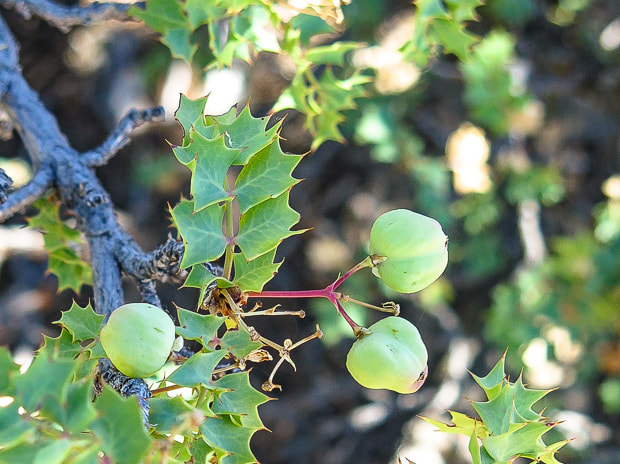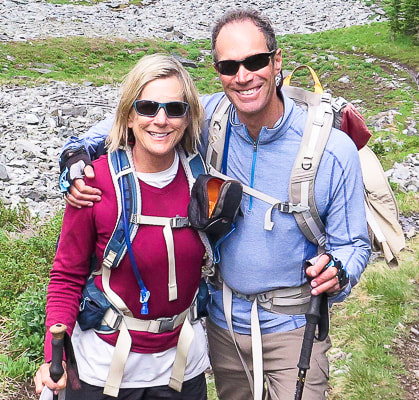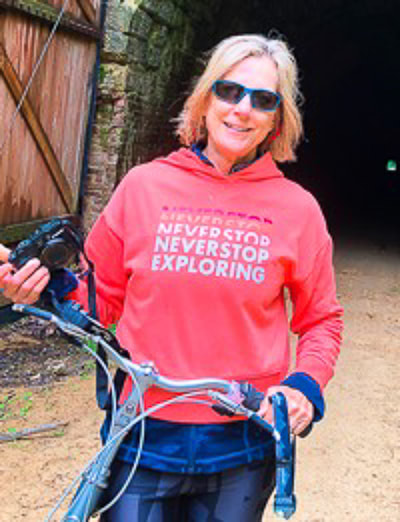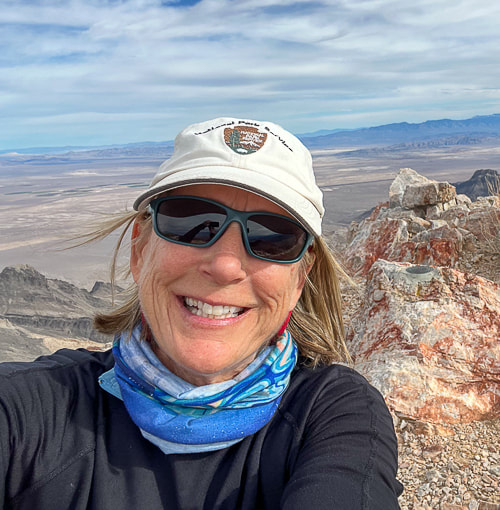|
A unique opportunity to see a near-relict, pristine desert ecosystem on the most inaccessible mesa in Grand Staircase - Escalante National Monument: No Mans Mesa, accessed from Lick Wash trail is solitary, remote, and undisturbed. View of Park Wash and Navajo sandstone cliffs from rock fan of No Mans Mesa This hike follows the 4-WD road to the right of wash Trip Stats
"In sublimity - the superlative degree of beauty - what land can equal the desert?" - John C. Van Dyke Lick Wash Trailhead sign 18 miles down Skutumpah Road; large ponderosa pine and Navajo Sandstone walls ~ 1/2 mile down Lick Wash Hike elevation profile - Lick Wash trailhead to top of No Mans Mesa Route travels southeast down Lick Wash, then meets with Park Wash to travel northeast to northern tip of No Mans Mesa Entrance into Lick Wash, shortly after trailhead Towering sandstone walls dominate on the first mile of Lick Wash hike I was excited to get to the top of No Mans Mesa, since I do field work surveying ecological sites, work on conservation of a rare plant, and volunteer for habitat restoration. Fred and I had attempted to hike to this mesa 3 years ago, but the condition of Skutumpah Road was too risky after a few rainstorms. At a bend in Lick Wash about 2.5 miles from the trailhead, after steep walls had given way to a wider, less-constrained channel, Fred and I got our first view of No Mans Mesa. It's long length and towering 1,200-foot white walls were just emerging from morning shadows. Like a fortress it stood, looking impenetrable, at least to this first view. There's a small passage, however that climbs through the walls to the top, and we were hoping to find it. The next goal for this journey was to find the intersection of Lick Wash and Park Wash, and locate the trail that would take us past the LeFevre line cabin, through the sagebrush flat of Park Wash, then to the bottom of the rock debris fan located on the north side of No Mans Mesa in Grand Staircase-Escalante National Monument. We had driven 18 miles down Skutumpah Road to the Lick Wash trailhead and hiked the wash in a southeastward direction. I was prepared with the excellent hiking route directions from the website Earthline: The American West. Sure enough, at 4.0 miles, we reached the large Park Wash that continues the hike in a northeast direction between the walls of Calf Pasture Point and No Mans Mesa. Massive white Navajo Sandstone walls of Calf Pasture Point kept us in shade but only briefly, then we merged into the blazing sunlight of wide Park Wash, walking on a sandy trail that shortly intersected with an even sandier four-wheel-drive road. What a unique place to be in this remote wilderness! We trudged up the road that parallels the wash to the first shade we could find under a juniper and took a break. It was here that we saw what was unmistakably the rock debris fan that we would have to ascend. First view of No Mans Mesa 2.5 miles down Lick Wash View of debris fan (rockslide) on northernmost point of No Mans Mesa from 4-WD road At 4.5 miles into the hike, we reached the dramatic scene of the LeFevre cabin dwarfed against the bleached Navajo Sandstone overhang of Calf Pasture Point, and tucked under ponderosa pines. At ~ 4.9 miles, trudging in the sand, we passed a fence line, walked a few more minutes and found a defined stock (and human?) trail leading toward the debris slide. We crossed deep Park Wash, wove around sagebrush and found ourselves at the bottom of the debris fan. The top of the steep cliffs was 800 feet above, and we tried to locate our only passage to the nearly pristine crest of No Mans Mesa. We followed a faint trail and located our first rock cairn trail marker a few hundred feet up the rock slide and after this, the cairns were usually easily seen and numerous enough to follow the trail (June 2018). Back and forth the trail switchbacks to the top of the fan. The transition point from exiting the debris fan to entering the steep cliff walls is a rock "bridge" ~ 20 feet across with a steep and loose gully tumbling down to the right. LeFevre cabin in Park Wash - 4.5 miles from Lick Wash trailhead Cairn marking trail up debris fan. Park Wash with trail below Eroded bedding provides a staircase as you walk on more solid ground. The trail gets steeper and more exposed. Stunning views open up. It appears that in some places sandstone has been chiseled to make the trail, probably by Jepson, the goat herder in 1927. From the wash floor, the cliff walls looked impenetrable - now we were squeezing through the only known passage to the top. Then suddenly we were taking the first steps into the relict, almost surreal world of No Mans Mesa with its relatively long and flat terrain, nothing but blue sky above. Savoring each step, we took a break in pinyon pine shade near a ledge of burnt orange rock with hints of blue-grey - part of the Carmel Formation. Many wildflowers were in seed. There were no cheatgrass seeds getting stuck in my socks, only open bright sand weaving around healthy bunch grasses and small sand dunes sprouting native Arizona thistle. On a short walk around the top, I found chert debitage, a white rock flake that shows evidence of stone tool-making. Surprised by the presence of sand dunes, I then realized that in fact, Navajo Sandstone was created by deposition of wind-blown sand into large dunes (eolian environment). It was originally red: it was turned to a brilliant white color after reducing fluids dissolved the iron oxide from the grains of the deeply buried sandstone. Trail shortly after crossing "bridge" between talus of debris fan and entrance into cliff rocks Nearing top through break in cliff to No Mans Mesa Trail appears to be chiseled into the rock at a few places Finally at the top! View from top of No Mans Mesa of Park Wash and Pink Cliffs For the Phytocurious According to the study A Comparison of a near-relict site and a grazed site in a pinyon-juniper community in the Grand Staircase National Monument, Utah, no non-native species were found on the study plots on No Mans Mesa. This study compares vegetation species cover and richness, cryptobiotic crust cover and soil on No Mans Mesa and Deer Spring Point, ~ 2 km southwest of No Mans Mesa. Deer Spring Point is accessed by a road branching from Skutumpah Road and is grazed in the summer by domestic livestock. Characteristics for these two study sites are similar: same geology, elevation, soil, aspect and plant community type. Major findings comparing plant communities in the grazed site and the non-grazed, near-relict site:
In our short exploration at the top, I was aware of just about every step on that isolated, ecologically "pure" mesa elevated above lands that held invasive plants in this remote wilderness. I felt I was taking steps about 200 years back in time before invasive species were introduced. Reluctantly, I walked out of that beautiful land and committing to memory what this place looks like. We found our steep entrance and hiked down past the rusty mangled fence that Jepson must have used to keep his goats on the mesa. Still not a cloud in the sky on this mid-June day. White wash and trails curved their way through the dark sagebrush flat 800 feet below us. This time, as we neared the lower section of the debris fan, we veered north and found a less rocky and more sandy descent to the valley floor. By this time we were hiking in full blazing sun - it was getting pretty darn hot. Pausing to rest under any shade we could find, we bypassed side canyons that would have to wait until next time. At last we reached the cooler narrows of Lick Wash and shed our sweat-soaked shirts for awhile. I wish I were in the shade of those sandstone walls, sliding my hands over the ancient and eroded beds, hearing the crunch of the purple-hued trail, and smelling the ponderosa pines. We will be back here, but time keeps ticking. A recently retired friend, talking about his planned adventures, said to me, "I don't know if I have enough money, but I sure as hell don't have enough time!" How true. Lick Wash narrows Native Arizona thistle Sand dune! Northern No Mans Mesa Arizona thistle (Cirsium arizonicum) against Navajo Sandstone No Mans Mesa Loamy sand of No Mans Mesa Making our way down - a few loose rocks North tip of No Mans Mesa Ascend left side (northernmost point) Navajo Sandstone cliffs of Calf Pasture Point References:
Atkison, Ron. Hiking Grand Staircase-Escalante and the Glen Canyon Region. 1998. Falcon Publishing. pp 288-292. Gregory, Herbert E. 1951. The Geology and Geography of the Paunsaugunt Region Utah. Geological Survey Professional Paper 226. United States Government Printing Office. Guenther, D., Stohlgren, Thomas J., Evangelista, P. 2003. A Comparison of a near-relict site and a grazed site in a pinyon-juniper community in the Grand Staircase National Monument, Utah, In book: The Colorado Plateau: cultural, biological and physical research. The University of Arizona Press, pp. 153-162. Mason, Lamar R., Andrews, Horace M., Carley, James A., Haacke, E. Dwain. 1967. Vegetation and Soils of No Man's Mesa Relict Area, Utah. Journal of Range Management 20: 45-49.
7 Comments
|
Categories
All
About this blogExploration documentaries – "explorumentaries" list trip stats and highlights of each hike or bike ride, often with some interesting history or geology. Years ago, I wrote these for friends and family to let them know what my husband, Fred and I were up to on weekends, and also to showcase the incredible land of the west.
To Subscribe to Explorumentary adventure blog and receive new posts by email:Happy Summer!
About the Author
|
